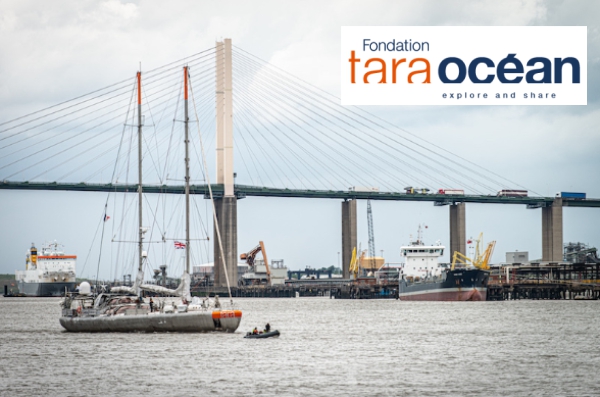According to a recent press release by the Tara Ocean Foundation, microplastics are ubiquitous in European rivers. For over a period of six months the research schooner Tara voyaged along the four European sea fronts and collected 2,700 samples from nine major rivers in Europe.

The rivers were Thames, Elbe, Rhine, Seine, Ebro, Rhone, Tiber, Garonne, and Loire. On board were marine biologists, ecotoxicologists, oceanographers, modelers, chemists and physicists.
"100% of the water samples taken in the 9 European rivers contained microplastics. The hypothesis that microplastics are ubiquitous in rivers is validated. Among these samples, and not surprisingly, are microbeads present in certains cosmetics, toothpastes, etc. But also a high proportion of fragments visible to the naked eye—called “secondary microplastics”, resulting from fragmentation of plastics due in particular to the sun’s rays. Less than 5 mm, these microplastics represent more than 90% of the 5,000 billion pieces of plastic floating on the surface of our oceans."
"The other major observation resulting from this mission concerns the toxicity of microplastics in rivers. During the mission, traps containing different types of plastic were deliberately immersed. These plastics showed no sign of toxicity before immersion, but after a one-month stay in the rivers, their toxicity had become positive. We already know that some plastics give off additives (including endocrine disrupters such as bisphenols A and phthalates), but some “control” plastics were also found to be “pollutant sponges”. Transported towards the ocean, plastic particles accumulate on their surface the pollutants present in rivers (pesticides, hydrocarbons, heavy metals, etc.) and can have toxic effects on the organisms which ingest them, slowing their growth and reproduction by disrupting their metabolism and their hormonal system."
"In the next 12 to 18 months, these samples will make it possible to compare the quantities of waste, their degradation, composition, etc. These microplastics are so many clues, providing “ evidence ” to trace the origin of the dispersion, identify the dispersion centers according to their size and chemical nature, and target the highest concentrations of microplastics, so that we can take action at the source as soon as possible."
According to Romain Troublé (executive director of the Tara Ocean Foundation), “This vast proportion of microplastics—already impossible to collect at sea, and transported also by our watersheds and rivers—makes it impossible to clean the rivers. Solutions to this problem are definitely on land.” The Tara Ocean Foundation’s mission includes translating scientific expertise in order to inform public policies. Here are 5 urgent and complementary measures that should be taken immediately:
- Significantly improve the collection and recycling of waste, for example, via deposits on bottles and soda cans—Drastically reduce disposable plastics, single-use and other packaging
- Reduce the number of resins and the complexity of additives used in manufacturing plastic objects
- Develop « eco-packaging » to replace problematic materials such as expanded polystyrene
- Adopt laws setting a «source reduction calendar» for all types of disposable packaging, consistent with European directives.
The full press release can be found here
Source: Tara Ocean Foundation
